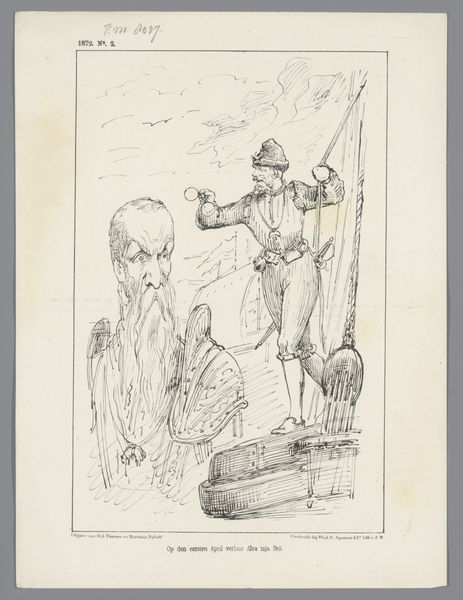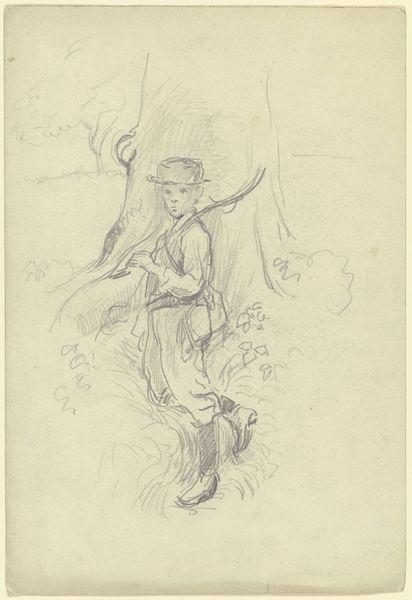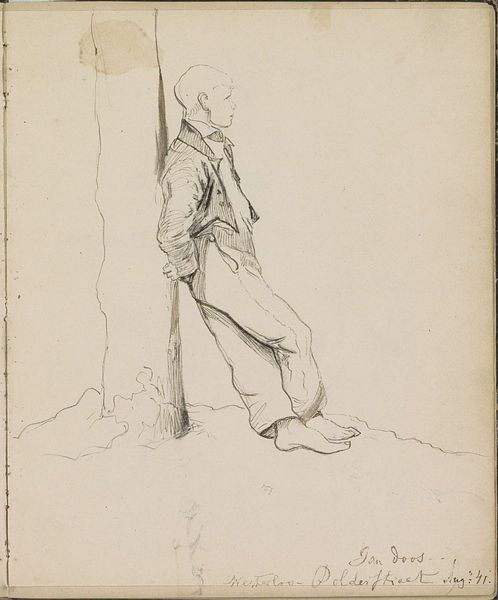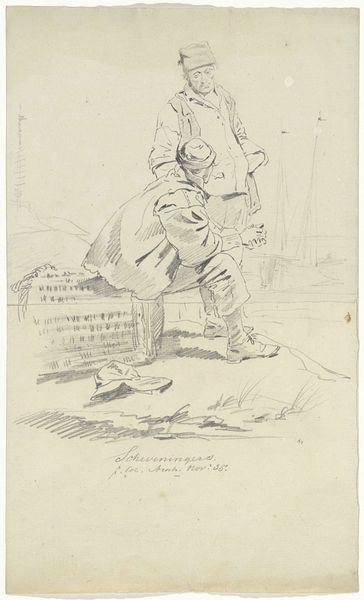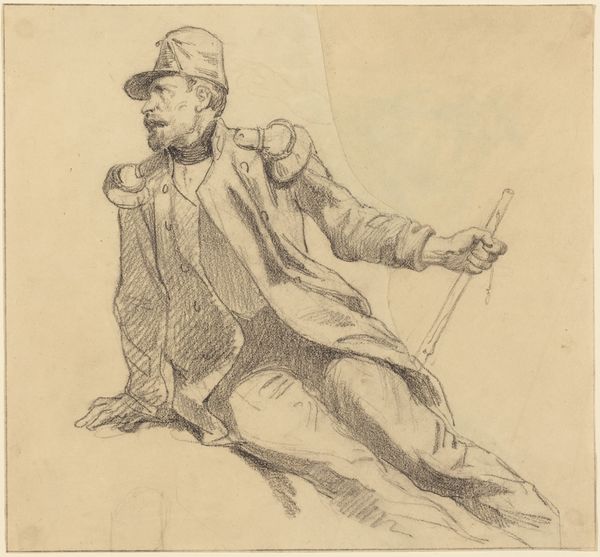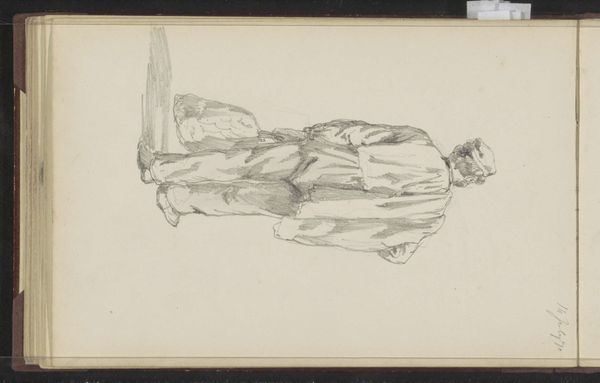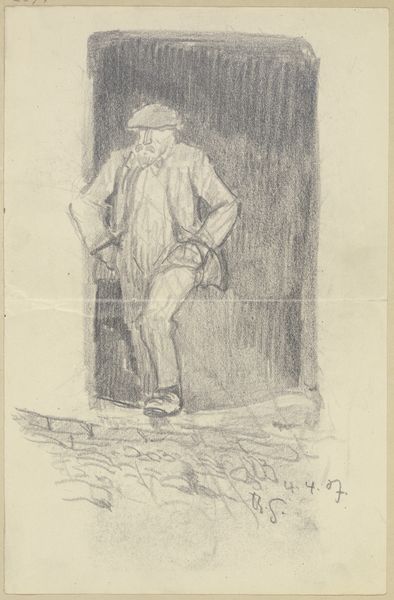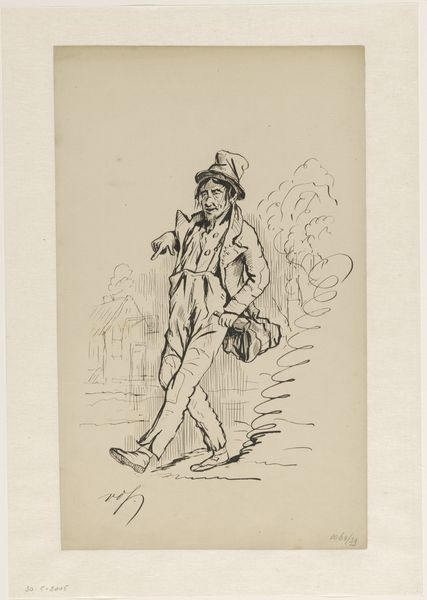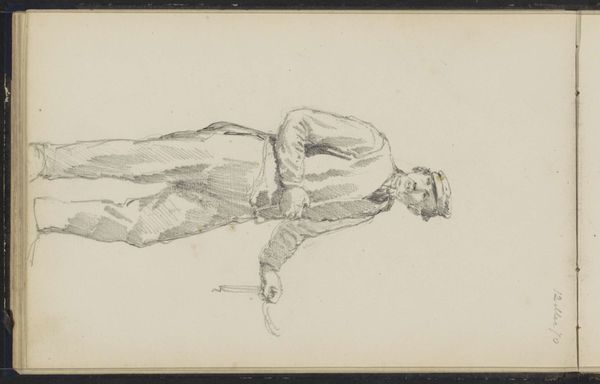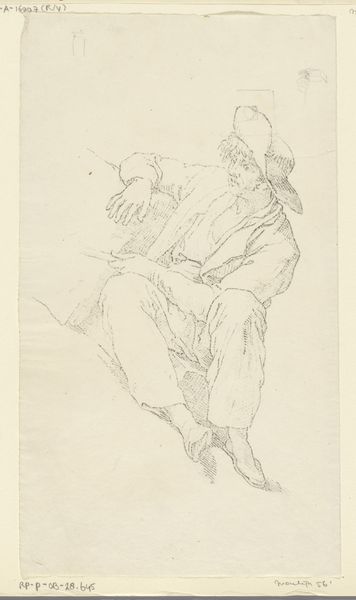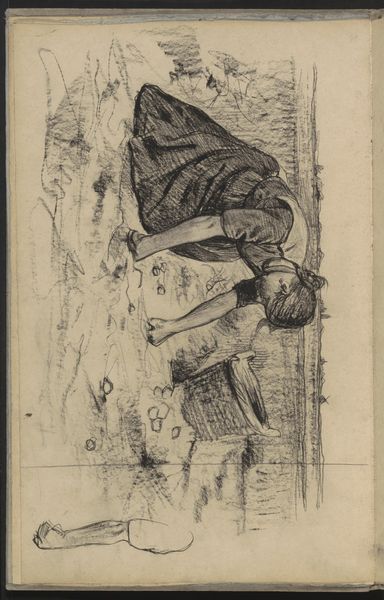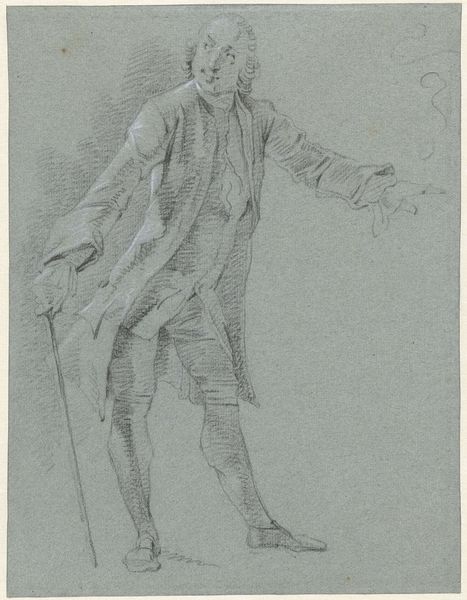
drawing, print, pencil
#
drawing
# print
#
caricature
#
pencil sketch
#
landscape
#
figuration
#
pencil
Dimensions: Sheet: 11 1/4 x 7 5/8 in. (28.6 x 19.4 cm)
Copyright: Public Domain
Curator: This pencil drawing, simply called "The Tempter," comes to us from Sir John Tenniel, dating back to 1886. It’s currently held at the Metropolitan Museum of Art. What strikes you most about it? Editor: Well, initially, this elicits a strong sense of unease. It's stark, a landscape rendered in very delicate, almost ghostly lines, and there's a haunting quality to the figures depicted within it. That word 'Tempter' has extra weight given how subtly it's realized. Curator: Indeed. Tenniel, who’s probably best known for his illustrations in "Alice's Adventures in Wonderland," employs figuration and caricature here. The ethereal figure looming behind the main subject seems to represent "anarchy," if we are to judge by the headband. How does that symbolism impact you? Editor: That adds an element of explicit menace that I initially sensed. It changes the entire mood; what could have been simply a landscape with a troubled wanderer, shifts into a psychological portrait of temptation and, ultimately, destruction. That spectral figure dominates— the hat the traveler wears appears almost fragile, flimsy. It makes one feel almost sorry for this man. Curator: The figure seems weighed down, doesn't he? Perhaps burdened by his choices, or even simply by the relentless pressure of this looming ideology. And yet, we only see this weight, this 'anarchy,' from his perspective. We are granted insight into his specific struggle. It becomes intimate. Editor: Exactly. And Tenniel does that with such deftness. There's a lot implied, almost as if our mind has to finish it. I suppose this visual incompleteness reinforces the anxiety: there's no escape if our own mind turns against us. The setting makes us feel incredibly small; and that feeling amplifies as we begin to realize what the main character is facing. The work’s lasting appeal must rest on how resonant that experience is. Curator: That incompleteness speaks volumes to its success. And there’s something unsettlingly modern about seeing such explicitly political subjects represented with the emotional vulnerability usually associated with intimate self-portraits. Editor: Yes, definitely. And you see that interplay very rarely. This fusion feels almost revolutionary for its time. I came in seeing a ghostly picture, and leave with questions on ideology, vulnerability, self-deception... pretty neat!
Comments
No comments
Be the first to comment and join the conversation on the ultimate creative platform.

